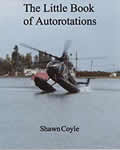All Articles
Accident Investigation & Reconstruction
Intellectual Property
Accident Prevention & Safety
Investigation & Surveillance
Accounting
Land Mapping - Surveying - Zoning
Addiction Issues & Substance Abuse
Law Enforcement
Appraisal & Valuation
Linguistics
Branding - Brand Management
Manufacturing
Chemical Industry
Medical - Medicine
Child Welfare
Medical Malpractice
Counseling
Medical Records Review
Crime Scene Investigation
Meditation
Digital Forensics
Metallurgy
Economics
Mining
Engines (Combustion - Diesel)
Oil & Gas
Forensic Analysis
Patents
Forensic Psychiatry
Pharmaceuticals
Forensics
Plants & Trees
Forgery & Fraud
Pools and Spas (Recreational)
Gems & Jewelry
Radiology
Hazardous Materials
Real Estate
Healthcare Facilities - Hospitals
Recreation & Sports
Human Factors
Risk Management
Human Resources
Security
Hydrology
Taxation
Industrial Hygiene and Safety
Underwriting
Injury
Workplace Violence
More...

RADIOLOGY-PAGE ARTICLES MAIN PAGE
. Contact Us if you are interested in having your work published on our website and linked to your Profile(s).
All Articles
Animals
Injury
Appraisal & Valuation
Insurance
Archaeology - Archeology
Intellectual Property
Automotive - Vehicular
International Trade
Banking
Jails - Prisons - Correctional Facilities
Biokinetics
Land Use
Construction
Laws & Procedures
Counseling
Life Expectancy - Life Care Planning
Crime Scene Investigation
Linguistics
Damages
Manufacturing
Design
Marine - Maritime
Digital / Crypto Currency
Medicine
Digital Forensics
Mining
Elder Abuse
Oil & Gas
Electrical - Electrocution
OSHA
Engines (Combustion - Diesel)
Pharmaceuticals
Exercise & Fitness
Pharmacy & Pharmacology
Eyewitness Testimony
Plastic / Reconstructive / Cosmetic Surgery
Failure Analysis
Police Practices & Procedures
Finance
Product Liability
Forensic Analysis
Search Engine Optimization (SEO)
Gems & Jewelry
Speech-Language Pathology
Hotels & Hospitality
Spirituality
Human Factors
Toxicology
Hydrology
Workplace Violence
More...
Featured Articles
There are no active articles here at this time. Please use the search bar, try another category, or contact us if you would like to contribute an article.
This Article is unavailable. Contact Us
Search articles by title, description, author etc.
Sort Featured Articles
Featured resources
The Little Book of Autorotations
by Shawn Coyle
A Brief History of Entrepreneurship:...
by Joe Carlen
Life-Changing Weight Loss: Feel More...
by Kent Sasse, MD
Follow us










